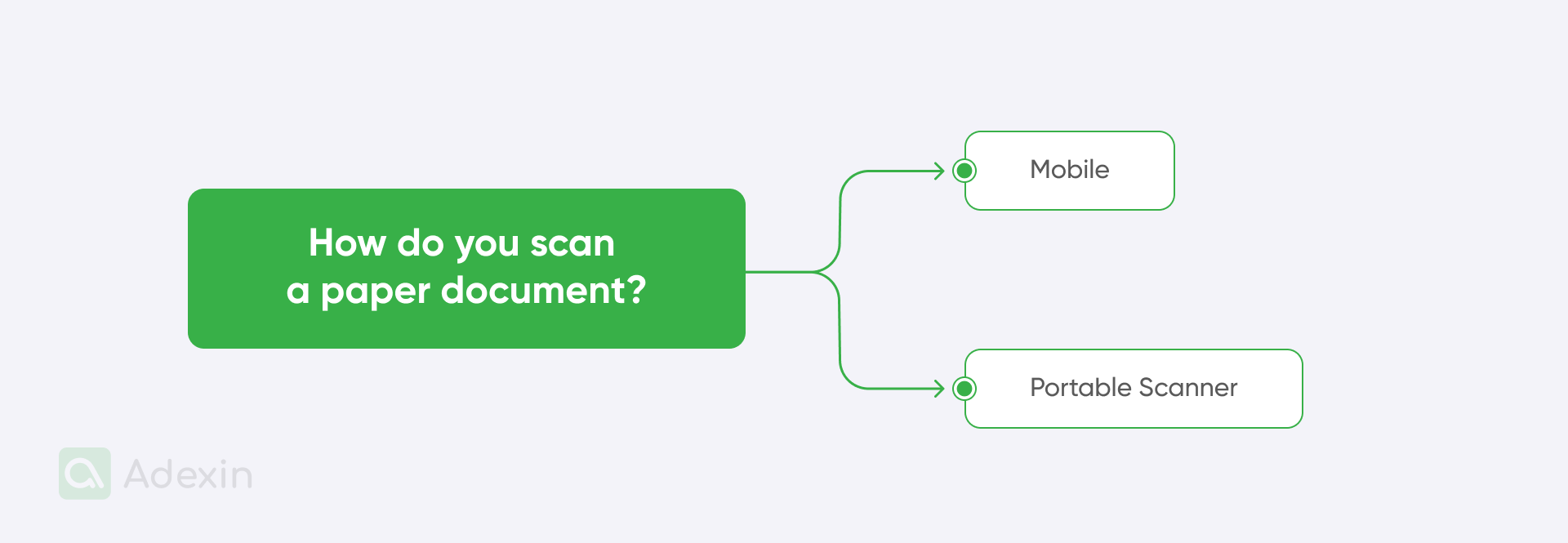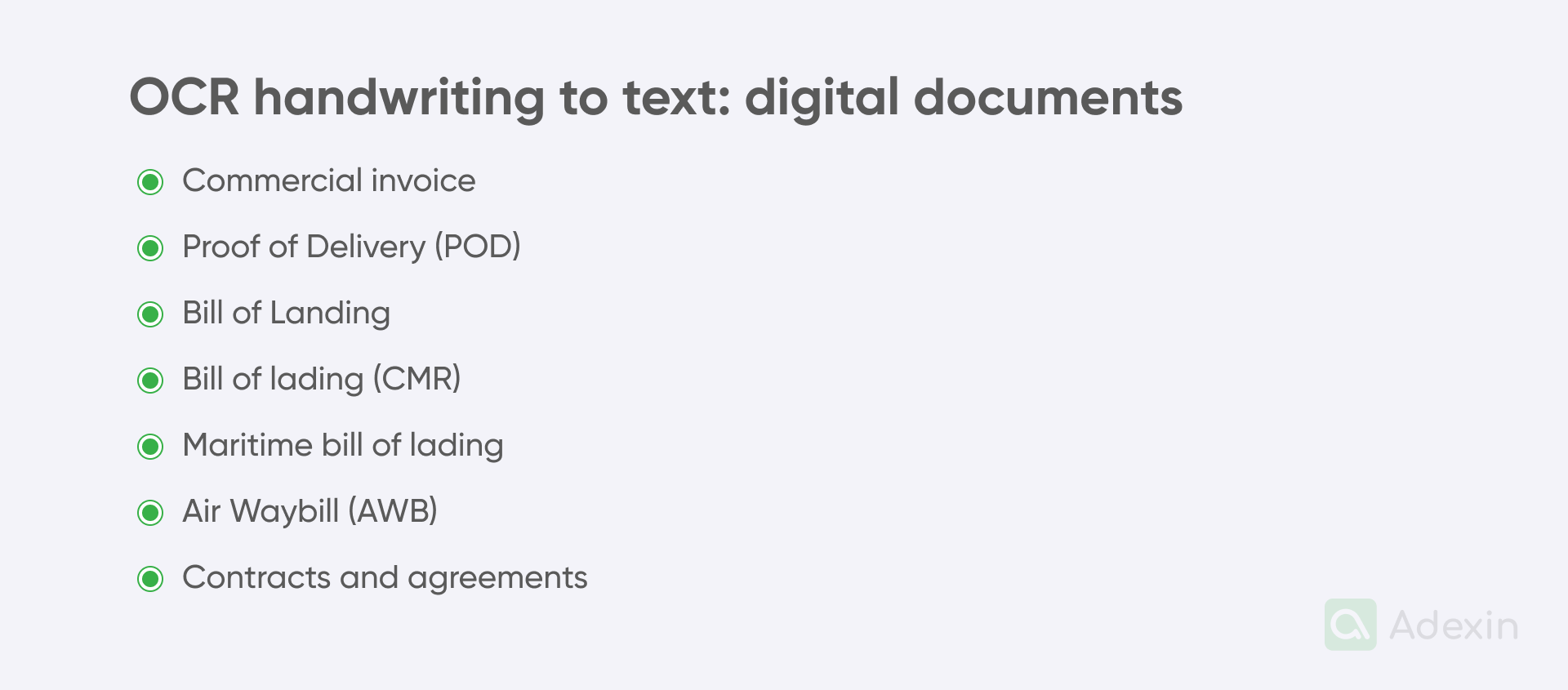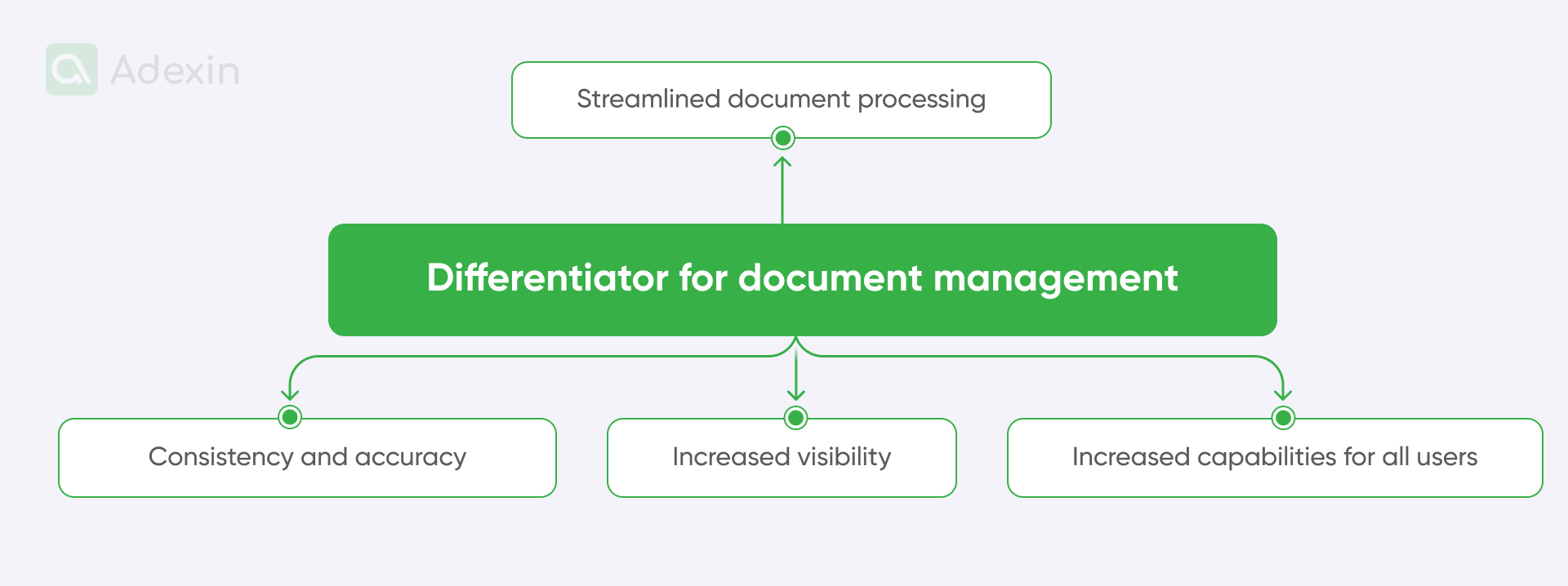Summary
The administration of paper documents is complicated. People in offices like the OSG (operations support group) are overwhelmed with paper copies flowing from cabinet to table, through the warehouse to the dock. There is simply too much paper in the loop.
It's not difficult to imagine how this could change with a digital format for every document since we already have that capability. But it's still difficult to feed people with technology when it comes to larger-scale business operations in transportation. Simple, but not.
Here, we want to introduce you to document scanning software capabilities that can transform your business, saving you time and money. From automatic document identification to OCR technology for handwritten signatures and efficient document routing. Let’s get to know more about how to streamline your operations. Let's get rid of paperwork.
How do you scan a paper document?
Document scanning in the transportation industry is something that companies are already familiar with. It's about ongoing digital transformation that will reduce paperwork in the future and streamline typical logistics processes.
Transportation companies are now supported by Document scanning software that helps with steady document transformation while keeping operating costs low. It is worth noting at the beginning that the most significant benefit of digitizing documents is the shortening of the so-called "time to invoice." All companies depend on financial aspects, and transportation is no exception. Therefore, converting transportation documentation into digital documents can significantly help companies swiftly exchange data.

Document scanning software allows digitizing documents in real time and sharing digital formats between departments. Here are the different methods and types of scanning paper documents supported by scanning software:
Mobile
Mobile scanning involves capturing documents using a mobile device's built-in camera, whether a mobile phone or tablet. This process relies on a mobile app that is integrated into the document-scanning software. The mobile app offers various scanning options, such as scanning documents to email and offline scanning.
This is how employees can scan documents on the go, wherever they are, as long as they have their mobile devices by hand.
Portable Scanner
This type of scanner is typical office equipment and is often built-in with a printer. This setup allows employees to scan larger volumes of documents, create digital copies, and send them directly via email from the scanner.
Smaller portable scanners can be placed on the transport administrator's desk, allowing them to convert document formats to digital in a matter of seconds.
Why choose a document scanning system?
Before we dive into the 5 critical features of Document scanning software, it is important to mention why we may really need it in transportation.
Scanning documents brings significant value to an organization. Transportation companies can benefit in various ways, making business operations smoother and errorless. Implementing a document scanning system can create an accessible environment for all organizational stakeholders and employees. There are many employees involved in the typical transportation document flow in the supply chain. Looking through the typical organization in the supply chain, we can better understand possible issues that employees in the transportation industry can encounter in the entire document cycle.
Here are several various departments that are involved in transportation planning and are responsible for document management:
Purchasing
Supply chain management begins with purchasing operations. Raw materials must be ordered and delivered on time to produce goods in a manufacturing plant. Coordination with suppliers and transport companies is crucial to prevent delays. This is also the stage where the first type of transportation documents, including the purchase order (PO), are created. Scanning document systems can easily support this process when it comes to sharing PO with other departments.
Operations
Demand planning and forecasting are necessary to determine production volumes and required materials. Accurate forecasting is critical to prevent overstocking, under-stocking, and aging stock, which can lead to lost revenue. This function must be integrated with transportation and shipping planning. Currently, the company crates shipping documents shared with carriers and end customers. To improve this process, scanning document systems can enable easy Document sharing across organizations. This function is supported by document management and workflow processes.
Logistics
Logistics operations combine shipping planning, purchasing, production, warehousing, and transport management to ensure the smooth delivery of products to consumers. Each department creates a series of documents to facilitate communication between departments, providing profitable shipping. In this case, the use of a scanning system is very important to ensure easy traceability and streamline approval processes.
Resource and Contracts Management
Sharing and distributing information in documents is the basis of supply chain and transport management. Companies create various documents, reports, schedules, transport plans, and overviews to improve communication throughout the entire supply chain. Implementing a consistent scanning system for all documents ensures data consistency, prevents miscommunication, and improves visibility.
Communication Flow
Sharing and distributing information within documents are the essence of supply chain and transportation management. Companies produce various documents, reports, and reviews to enhance communication throughout the entire chain. Implementing a consistent system for scanning all documents ensures data consistency, prevents miscommunication, and enhances visibility.
Here are the main benefits of choosing a document scanning system in transportation:
Better transport document flow in the organization
Document protection through electronic storage and archiving
Converting paper files into digital and indexed formats
Reduction of paper document storage in the organization
Improved customer service
Better transparency among all involved stakeholders
Save time by retrieving and accessing electronic files on internal systems
Document scanning system - Automated document identification
Automated document identification stands at the top of the document scanning system features. This includes two main functions:
Document Validation
Document validation is a crucial step in scanning documents for transportation. This very first process is about verifying the accuracy and authenticity of scanned documents, such as bills of lading and shipping invoices, to avoid delivery delays and regulatory violations.
Document processing
Document processing in transportation involves organizing, categorizing, and extracting information from scanned files. Doing so streamlines operations, as well as improves access to information. In the long run, it helps maintain customer service by a well-organized database of digital documents. [1]
Automated document identification enables these functionalities and advantages to the transportation industry
Automates tasks that would otherwise require manual oversight
Creates algorithms to recognize patterns from transportation documents, which helps with faster indexing
Recognizes and captures information from images attached along with shipping documents
Identifies document templates faster and more accurately than typical manual work
OCR handwriting to text - Automated name generation
The second key feature on our list is related to optical character recognition (OCR), a key technology for Document scanning software.
In transportation, OCR allows recognition of some documents from captured images, but its specifics can differ a lot. One of the most important is handwriting recognition. This technology allows for the recognition of handwritten signatures made by end customers, truck drivers, and transport administrators on digital document forms. It can recognize handwritten characters and convert them into digital ones.

Handwritten signatures are used extensively in practice in the transportation industry to accept various transactions, from shipping documents to contracts. Here are examples of transportation documents that may require confirmation by handwritten signatures:
Commercial invoice - a financial document with the signature of the issuing party.
Proof of Delivery (POD) - confirmation of delivery requiring the signature of the recipient.
Bill of Landing - a shipping contract signed by the carrier.
Bill of lading (CMR) - a letter certifying the carrier and requiring his signature.
Maritime bill of lading - a document based on a contract of freight signed by the shipper.
Air Waybill (AWB) - a document providing proof of freight signed by the carrier and shipper.
Contracts and agreements – documents between various stakeholders in transportation that require signature.
Document scanning workflow - Automated routing to the correct folder location
The third key feature of Document scanning software is document routing. To achieve this, the software employs a workflow that enables the movement of documents throughout the entire system architecture for indexing. Here's why automated document routing is essential and how it benefits the process:
Reduce archiving and storage costs
Decrease distribution costs
Support smooth document retrieval
Improve protection and control of information
Provide better availability of information
Deliver higher compliance with regulatory requirements
Enhance higher satisfaction ratio in customer service
OCR tool for PDF - Conversion to appropriate file type and data sharing
The fourth key feature is also based on OCR, which not only recognizes images from captured photos but can also scan digital documents to identify the information contained within them. In the transportation industry, this is essential, as it can extract data from various documents often sent via email in Portable Document Format (PDF). PDFs are usually protected against copying or editing, so only OCR technology can retrieve data from the Document and upload selected details to other data sources or convert them to another file type.
Here are some common document types in the transportation industry that may need to be converted from PDF:
Commercial invoices
Carriers often send emails with attached invoices in PDF format, but these must be manually transcribed by administrators into Excel or other financial control tools.
Customs documents
Customs agents often provide clearance documents to shippers. They are also required to review customs declarations, which do not allow copying details from the Document. These details should be added to other types of internal documents or reports.
Packing list
This type of Document contains all the details, including quantities, dimensions, etc. Packing lists are often provided as PDF files or scanned paper copies and may contain handwritten characters. OCR can review and convert them to digital format.
Digital scanning and network monitoring for new scans
Fifth on our list of key features for document scanning software is digital scanning with an automatic network monitoring model for further scans. This may seem a bit advanced, but understanding how it works is quite simple.
Document scanning software can detect any newly scanned documents and provide information to all parties directly involved in the document workflow. This means that all those in transportation who require shipment approval or document review will have instant access to scanned copies of documents, usually converted to PDF files. With this option, transportation administrators on the carriers' or shippers' side will be notified by email or within a software platform and will be able to make decisions faster.

The network monitoring model for new scans creates an exceptional workflow that is a differentiator for document management.
Streamlined document processing
The new scan monitoring model significantly speeds up the processing of supplier and delivery invoices.
Consistency and accuracy
The scan monitoring feature helps standardize document processing and eliminates data entry issues.
Increased visibility
The workflow for scan monitoring provides real-time visibility into job status.
Increased capabilities for all users
Scan monitoring simplifies the workflow for all users in transit (truck drivers, admins), changing the way documents are handled.
Final takeaway
Paper document scanning software can provide many functions, although its usefulness depends on the complexity of your transportation niche. If your company is a strict freight forwarder shipping trucks across Europe or the United States, you need software capable of providing clean digital copies of documents to all parties involved. If you're a freight forwarder, you'll be more focused on converting paper documentation with document scanning software dedicated to warehouse personnel, providing carriers with clean copies of documents to avoid shipping discrepancies.
There are many ways to manage documents, but these five features built into document scanning software can open up entirely new horizons for your business.
At Adexin, we have been supporting companies in the transportation industry for many years. By taking care of our customers' needs, we have learned which features play a key role in document scanning for any company. In this way, we help companies keep costs low while maintaining the highest efficiency. Contact us today, and let's talk about document scanning for your company.
References:
[1] Best-in-class digital document processing: A payer perspective; Retrieved form: https://www.mckinsey.com/industries/healthcare/our-insights/best-in-class-digital-document-processing-a-payer-perspective
